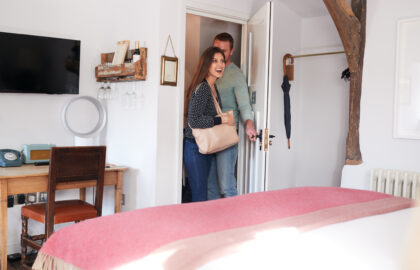
In Australia, rats, cockroaches, termites and other pests are unfortunately a common problem. However, when they show up in a rental property, the landlord and tenant may be confused about who is responsible for getting rid of them.
If you’re a tenant, the following information will help you understand the basic guidelines around this situation.
Who is responsible for a pest infestation in a rental property?
The first thing to note is that landlords have a duty to provide and maintain a fit and habitable dwelling. This includes taking steps to prevent pests from infesting the property.
However, tenants also have a role to play in preventing pest infestations, by storing food properly, keeping the premises clean, making sure their pet doesn’t have fleas and reporting any pest issues to the landlord promptly.
In New South Wales, Fair Trading explains that the person who is responsible for pest removal depends on:
• Whether the tenant contributed to the problem
• Whether pests have entered or an infestation has developed because of a problem with the property
• Whether or not pests or vermin were already a problem when the tenant moved in
So if the property has pests when the tenants move in or starts to show signs of having pests immediately after, unless the landlord and property manager can prove it is because of something the tenant has done, the landlord must cover the cost of getting rid of them.
However, if the property is clearly pest free when you move in and you leave rubbish lying around or fail to keep the place clean, it will be up to you to pay to get rid of the resulting rats, mice etc.
In Victoria, according to Consumer Affairs, if there is a problem because of something to do with the building structure, the tenant/renter can ask for urgent repair/pest removal. Again, if the landlord/rental property provider can prove the people living in the home have contributed to the infestation, they can request that they sort out the problem at their own expense.
Tenants Queensland quotes the Residential Tenancies and Rooming Accommodation Act 2008 and says the lessor, agent or provider must maintain the premises in good repair and in a state fit for the tenant to live in, while the tenant must keep the place clean and not damage it. If a tenant follows their responsibilities and does not cause a pest problem, then regardless of what is written in your agreement, the lessor, agent or provider will be
responsible for pest control.
The rules are similar in Western Australia, South Australia and other states.
In some cases, landlords may be fined for failing to address pest infestations caused by issues with the property, while tenants may be evicted if they breach their lease agreement by failing to maintain the home to the point where creepy crawlies move in.
Use a property manager to avoid pest control issues
If you’re planning to lease a property, what’s most important is to have things clearly noted in writing before you move in. On the day you move in, take note of the condition of the home and take pictures if you spot holes in the walls or evidence of termite damage.
A quality property manager will have already taken the right steps to make sure the home is pest free. This is why it makes sense to work with a professional rather than leasing directly from someone who may not be aware of the rules around pest control and rental properties.
Want help to ensure you’re renting a home in good condition? Reach out to your local Professionals representative today.







